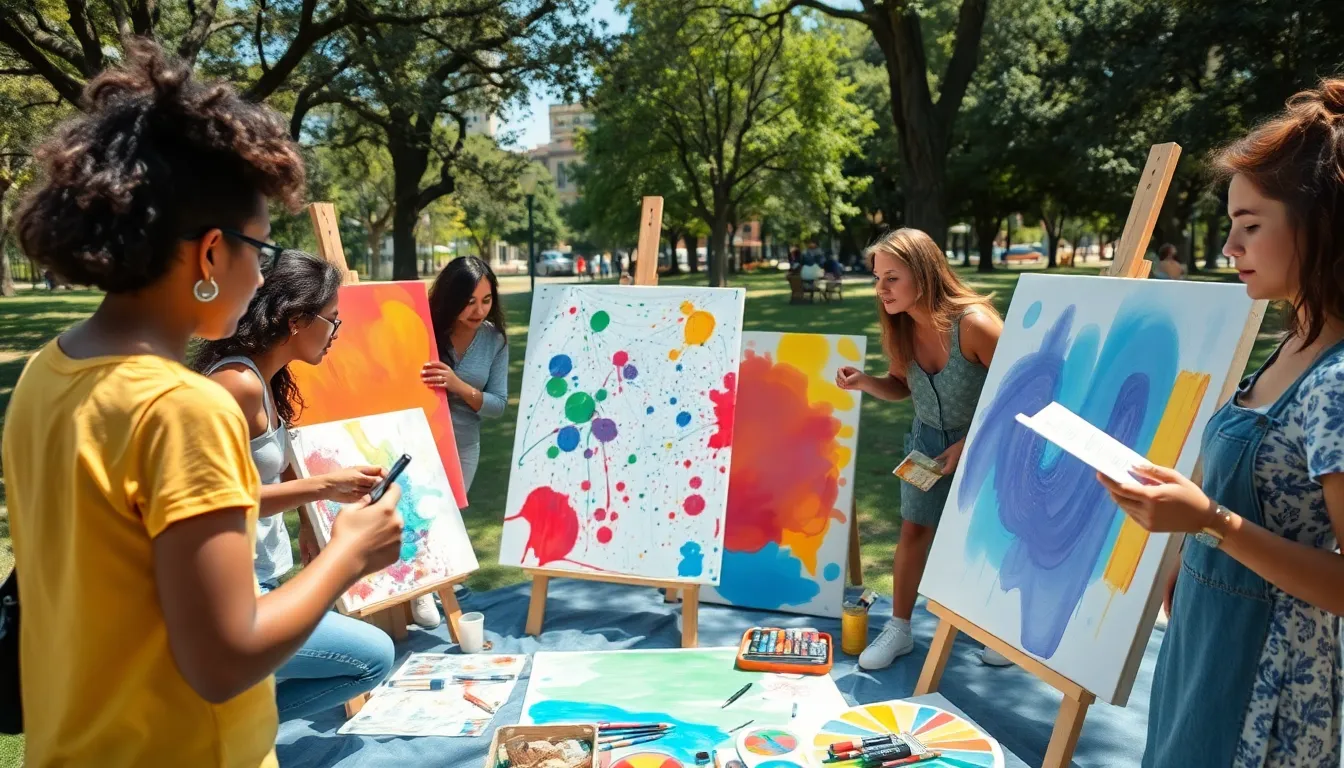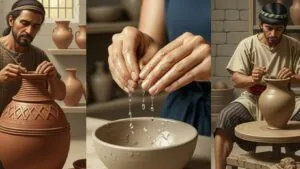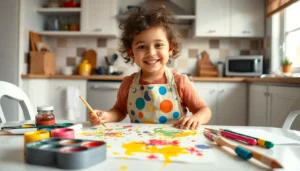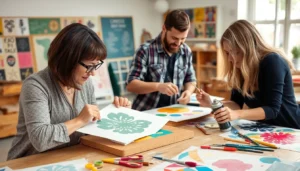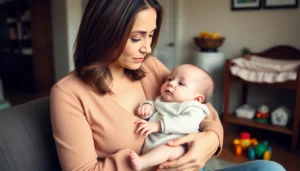Table of Contents
ToggleIn a world where art often comes with strict guidelines and expectations, open-ended art bursts onto the scene like a confetti cannon at a dull corporate meeting. This innovative approach invites creativity to run wild, allowing artists and viewers alike to explore the endless possibilities of expression. Forget about rigid structures and definitive meanings; open-ended art thrives on ambiguity and interpretation, making it a playground for the imagination.
What Is Open-Ended Art?
Open-ended art represents a significant departure from traditional art. It allows artists to explore concepts and materials without the constraints of established norms. This approach invites creativity and personal interpretation, fostering an engaging experience for both creators and audiences.
Artworks categorized as open-ended often lack definitive meanings. Viewers interact with these pieces in unique ways, drawing their interpretations based on personal experiences and emotions. Artists embrace ambiguity, inviting exploration rather than dictating a fixed narrative.
Common characteristics of open-ended art include an emphasis on process rather than just the final product. Artists frequently use various mediums, including painting, sculpture, and performance, encouraging experimentation. This flexibility leads to the creation of diverse forms that stimulate conversation and reflection.
Open-ended art doesn’t adhere to traditional evaluation methods. Critics and audiences appreciate it for its ability to evoke thought and dialogue rather than achieving a specific goal. This dynamic quality ensures that the conversation around these works continues to evolve.
Notable examples of open-ended art include interactive installations and community-driven projects. These forms invite participation, transforming passive viewers into active contributors. Artists successfully create spaces where collective creativity flourishes.
Open-ended art serves as an innovative platform for expression and imagination. It allows for fluidity in artistic interpretation while challenging the boundaries of conventional art forms. By emphasizing exploration and engagement, it redefines how individuals connect with art.
The Importance of Open-Ended Art
Open-ended art plays a crucial role in transforming the artistic landscape. This approach emphasizes creativity and individual interpretation, allowing for a more profound connection between art and the observer.
Encouraging Creativity
Creativity flourishes in open-ended art. Artists benefit from exploring new ideas without restrictions, leading to innovative works. By embracing ambiguity, creators experiment freely, resulting in unique expressions. Audiences become inspired by this dynamic process, prompting them to think outside conventional norms. Opportunities for interdisciplinary collaboration arise, fostering a rich environment for artistic growth.
Fostering Individual Expression
Individual expression thrives in open-ended art. Unique perspectives emerge through personal interpretations, allowing viewers to relate to artworks in meaningful ways. Many engage with pieces based on their emotions and experiences, enhancing their appreciation of art. Its inclusive nature invites dialogue and reflection, enriching the collective understanding of artistic intent. This format also allows artists to share their story; thus, personal connections to the work deepen further.
Techniques in Open-Ended Art
Open-ended art encompasses diverse techniques that enhance creativity and personal interpretation. Various methods invite exploration and experimentation.
Materials and Tools
Artists often utilize unconventional materials and tools in open-ended art. Common choices include recycled items, natural elements, and everyday objects. Paint, clay, and digital media also play significant roles. Manipulating these materials encourages unique outcomes, fostering innovation. Tools like brushes, palette knives, and even fingers allow for varied texture and style. Emphasis on adaptable techniques ensures that artists can transform any medium into a means of personal expression.
Methods and Approaches
Engagement with open-ended art relies on different methods and approaches. Collaborative practices often encourage teamwork, enhancing the creative process. Improvisation allows artists to build on spontaneous ideas, leading to unexpected results. Experimentation with layering, collage, and mixed media can evoke deep emotional responses. Abstract thinking drives creativity, enabling artists to explore thoughts beyond realism. Interactive methods invite audience participation, making art a shared experience. Each approach contributes to the dynamic nature of open-ended art, making it a continuously evolving field.
Benefits of Open-Ended Art
Open-ended art offers numerous advantages, enriching both the creator and the viewer. This approach cultivates a unique experience that fosters growth and connectivity.
Emotional and Psychological Impact
Open-ended art significantly influences emotions and mental well-being. It encourages self-expression and reflection, allowing individuals to process their feelings. Artworks that embrace ambiguity can evoke various interpretations, leading to deep personal connections. Immersing themselves in these experiences, viewers often find solace and inspiration. Engaging with open-ended pieces promotes a sense of curiosity, sparking imaginative thinking. Ultimately, this engagement enhances emotional awareness, empowering individuals to explore their thoughts more freely.
Community and Collaboration
Open-ended art strengthens community bonds through collaborative practices. Artists frequently invite participation, fostering a sense of belonging among contributors. Community-driven projects create opportunities for individuals to share their insights and experiences. This collaboration nurtures relationships and encourages dialogue, leading to collective creativity. Participants often discover new perspectives from fellow creatives, enhancing the overall experience. By incorporating diverse voices, open-ended art dismantles barriers, making art accessible to a broader audience. Collaboration in this context encourages inclusivity and enriches the artistic landscape.
Conclusion
Open-ended art is reshaping the way individuals interact with creativity. By breaking free from traditional constraints, it opens doors to personal interpretation and emotional connection. This dynamic form of expression not only invites viewers to engage but also encourages artists to explore uncharted territories.
As a result, open-ended art fosters a vibrant dialogue that evolves with each interaction. It cultivates a sense of community and belonging, allowing diverse voices to contribute to the artistic narrative. The impact of this innovative approach extends beyond the canvas, enriching lives through self-expression and reflection. Embracing open-ended art means embracing a world where imagination knows no bounds.


